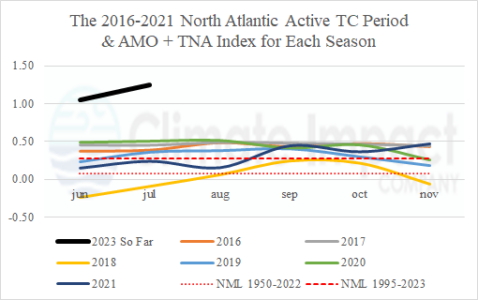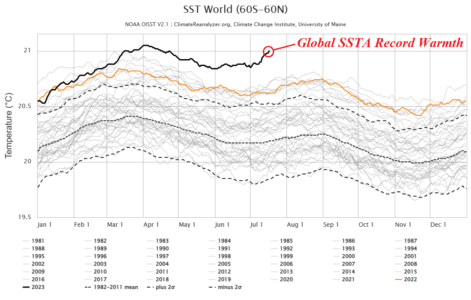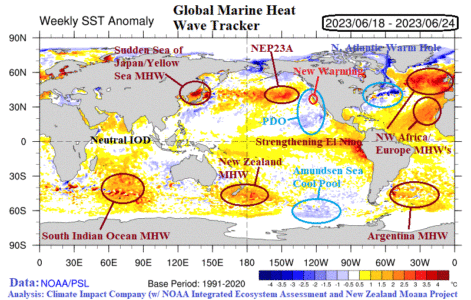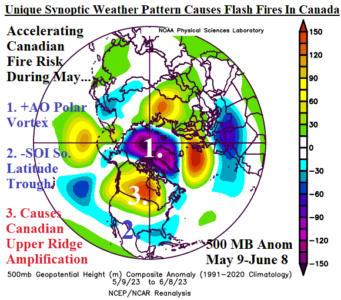07/23/2023, 3:45 pm EDT
For the first time in the historical record, accumulated cyclone energy (ACE) index was above normal for a 6-year period (2016-21) averaging 159 which is considerably higher than normal (126). One of the primary contributors to the active period is the much warmer than normal North Atlantic basin sea surface temperature (SST) pattern featuring increased frequency of unusually warm SST of 30-31C (or warmer) which ignites major hurricanes.
![Climate-Impact-Company-logo-sm[1]](https://climateimpactcompany.com/wp-content/uploads/2023/08/Climate-Impact-Company-logo-sm1.png)



